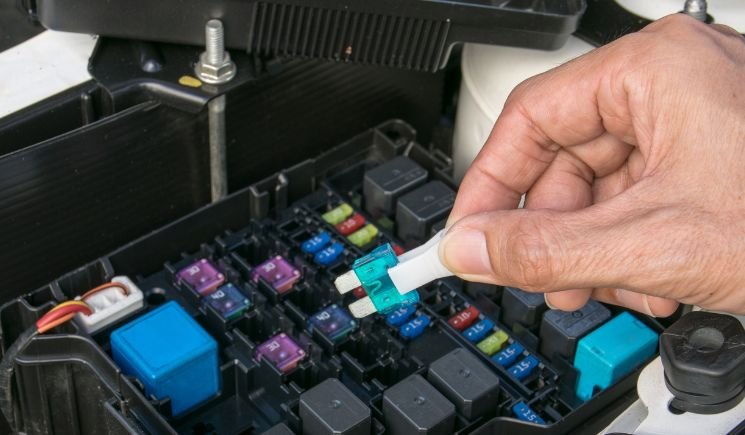Daytime running lights, or DTRLs, are a common feature in modern vehicles, including many Nissan models. DTRLs are lights that automatically turn on when your car is running, even without the headlights on, to make your vehicle much more visible to other drivers during daylight hours.
In this article, we’ll cover what DTRL stands for, common causes for a blown DTRL fuse, where to find the DTRL fuse in your Nissan model, and how to replace it. We’ll also provide some tips on preventing your DTRL fuse from blowing again.
What Does DTRL Stands For In Nissan Vehicles, And What Is The Purpose Of It?
- DTRL stands for “Daytime Running Lights”. These are the lights that automatically turn on when you start your Nissan, even without turning on the headlights.
- The purpose of DTRLs is to make your vehicle more visible and recognizable to other drivers during daytime hours. Having the front lights on makes your vehicle stand out better against the background.
- Nissan has included DTRLs as a standard feature on most of its models since the early 2000s. This includes popular models like the Altima, Maxima, Sentra, Rogue, Murano, Pathfinder, Frontier, and more.
- The DTRLs on Nissans utilize the high beam headlights at a reduced intensity, usually around 30-40%. Some models use dedicated LED strips or bulbs for the DTRLs instead of the headlights.
- When the DTRLs are on, the taillights and instrument panel lights does not comes on like when you turn on the actual headlights. Only the front lights activate for better daytime visibility.
- The DTRLs operate automatically based on a sensor that detects external ambient light levels. They will turn off at night or when the headlights are on.
- You can tell the DTRLs are activated on your Nissan when you see the front lights glowing brightly after starting up. The dash’s DTRL indicator light will also comes on as a sign.
Common Causes For A Blown DTRL Fuse
Normal wear and tear
- DTRL fuses may simply stop working over time after extended use, like any other automotive fuse.
- This is because the contacts can corrode or loosen by interrupting the circuit.
Electrical faults
- Issues with Nissan’s DTRL wiring harness, relay, or bulbs can put extra strain on the DTRL fuse by eventually leading to failure.
Moisture ingress
- Water and moisture entering the Nissan’s fuse box from a leaky windshield or flooded roads can cause the DTRL fuse for corrosion and malfunction.
- This is because the metal terminals are sensitive to wet conditions.
Voltage spikes
- Spikes in the vehicle’s electrical system from jump-starting, defective alternators, or other issues can overload and damage the DTRL fuses.
Exposure to heat
- Excessive engine bay or environmental heat in hot climates can degrade the DTRL fuse contacts over time by, eventually leading to failure.
FAQs (DTRL Fuse Nissan)
Q: What are the solutions for a blown DTRL fuse in my Nissan?
A:
- Replace the fuse if it is out of shape.
- Inspect all electrical connections for fuse failures.
- Inspect the actual DTRL bulbs for any damage or broken filaments.
- Test for any wiring shorts between the DTRL fuse box and bulbs.
- Apply dielectric grease to the fuse box connections.
Q: Where can I find the DTRL fuse in my Nissan?
A:
- Maximas often have the DTRL fuse in the engine bay fuse box in positions of #21, #23, or #37.
- In Sentras, you’ll typically find the DTRL fuse in the engine bay fuse box in the slot of #21.
- Rogue DTRL fuses are often as #23 inside the fuse box under the hood.
- Check positions #21, #23, or #39 in the engine compartment fuse box of the Murano for the DTRL fuse.
- DTRL fuses are usually in #21 or #39 slots in Pathfinders.
Was this helpful?
Thanks for your feedback!

